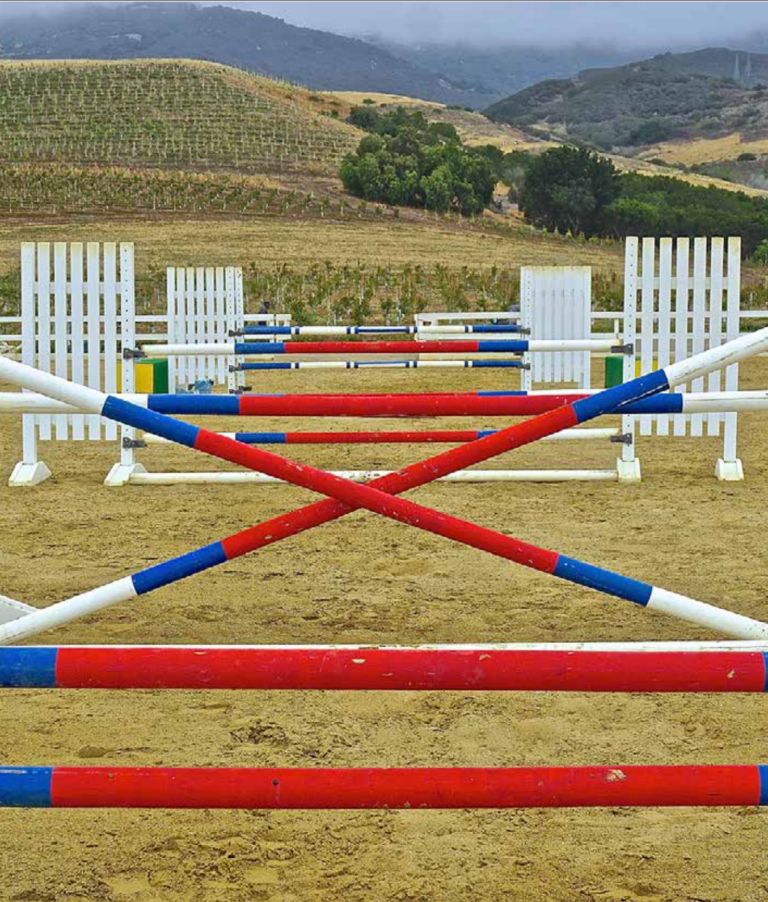Penny Newbold reveals a few tricks to keep your horse calm, relaxed and focused on the task at hand.
A frequent complaint from riders training horses to jump is that they tend to rush and their question is often: What can I do to stop him?
Horses rush their jumps because of several reasons. Perhaps he (or she) has developed a habit from a past rider. Perhaps he’s had a scare and just wants to get the whole process over as quickly as possible.
Whatever the reason, your goal should be to make him focus on things other than going fast. There are several ways to do this.
Transitions
It’s very important to keep your horse guessing what you might be going to ask him to do next. I make it a habit to never ride more than six strides (in walk, trot or canter) without asking for something.
This might be a transition within a pace (ie lengthening/shortening) or between paces (for example – trot/walk, canter/walk, halt between all paces, and vice versa), change of direction or a few steps of a lateral movement (leg yield, half pass, shoulder-fore, shoulder-in).
Grid work
Known amongst those closest to me as the Grid Work Queen , I’m a huge fan of coming up with a grid to solve just about any problem!
Try this super simple little grid: a pole, 9ft/2.75m to cross rail, 9ft/2.75m to a little vertical, 9ft/2.75m to another little vertical (bounce), 18ft/5.5m (it will work out to one stride, because remember you are approaching the grid at a trot) a little square oxer, 30ft/9.15m (it should work out to two strides) to another little square oxer if you have enough equipment.
Always start a grid with the poles on the ground, apart from the first crossrail. This will give you time to check that the distances will suit your horse as well as give him a chance to get his head around what is going to be asked of him.
If you need to adjust the distances to suit your horse, that’s okay. Just remember that if they are on the longish side they will encourage your horse to quicken their pace.
The trick is to keep him thinking slow. Start off in a 20m circle doing walk/trot transitions. Keep it sloppy, make it boring, on as long a rein as he will let you.
Once he’s in a sloppy, chilled, rhythmic jog, shorten the reins (slowly) and incorporate your grid without changing anything. If he starts to speed up towards the grid bring him back to the walk, or make another circle. Keep him guessing. Throw in a few halts to really mix things up.
The pole on the ground will dictate the pace, the crossrail is inviting, the bounce is designed to back him off and make him think where he’s putting his feet.
The oxers are consolidating what is (hopefully!) achieved through the bounce, and the squareness of the oxers will encourage him to round through his back and be a little careful with his front end.
If it takes a few times for him to realise he won’t be allowed to race through it, that’s okay. You will make it so much harder for yourself if you get frustrated either at him or yourself! Aim for small improvements and celebrate them when they come, which they will in time.
Make sure you stay in balance with him, don’t get in front of or behind the movement, stay relaxed. Remember, any tension you feel will transfer to him and that will only, in turn, lead to him getting tense and quick.
Your job as the rider is just to control the pace and stay as far from interfering as possible – the grid should do the rest of the work.
Good luck.



